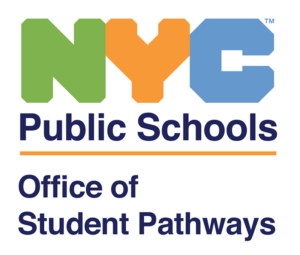Work-Based Learning - Career Day Activity Guide

Career Day Fact Sheet
What is Career Day?
A Career Day is a highly structured Career Awareness activity in which business partners from a variety of companies come together at the school or online to share information about their company, their job, and the education and skills that are required for success in their career.
Designed to meet specific learning objectives, a Career Day helps students connect what they’re learning in school with the workplace. They listen to speakers or navigate the event independently, seeking information about the industry and the career options it provides. They also learn about the education required for entry into the industry and participating business’s role in the local economy.
Sustaining and growing Career Days and all other Work-Based Learning activities depend on maintaining positive relationships with the participating employers. These employers should be treated as valued customers and partners with frequent check-ins to address participation needs as they arise.
Career Days are designed to:
- Expose students to a variety of careers and jobs by connecting them with business partners.
- Provide a realistic picture of the workplace.
- Help students make the connection between school and the workplace.
- Inform career planning.
Career Days are structured to:
- Allow students to listen, receive information, ask questions.
- Enable students to begin identifying areas of career interest.
- Elevate students’ comfort level in interacting with adult professionals and demonstrate their communication skills.
Career Days are supported by:
- Classroom preparation, including research on the industry and participating businesses.
- Employer orientation and support.
- Opportunities to reflect upon the experience verbally and in writing.
Career Days are connected to:
- Individual career development/training plans.
- Future work-based learning activities.
- The student’s next steps.
Career Days are one activity in the continuum of authentic work-based experiences provided to all students engaged in career-related programs or course of study in New York City Public Schools.
Career Day Activities are recognized as a “Zero Hour” Supporting WBL activity by NYSED and the New York City Public Schools.
Career Day Formats
Required Materials
Implementation Materials
Support Materials

Quick tips for Work-Based Learning Coordinators* to ensure a successful Career Day
Before
During
After
Tips for Conducting an Online Career Day
*In New York State, this includes certified work-based learning coordinators and others who facilitate, arrange and support work-based learning activities for students.
Sample Timeline
Tips for Success

Career Day Virtual Options
Introduction
Translating a Career Day activity to a virtual classroom or set of classrooms is a fairly straightforward process. While Career Days are usually conducted at the school in an assembly-like setting, in some cases Career Days may be organized for the virtual classroom or set of classrooms via Zoom, WebEx, Microsoft Teams, Google Meet or some other technology. Related virtual activity options are also possible, where students conduct on-line research and share their findings, serving as a foundation for an activity and/or discussion in the classroom.
Virtual Activity Options
Remember, virtual activities either promote “live” student contact with adult professionals and front-line workers via the use of technology, or are simulations and provide students with employer exposures through recordings, online research and related classroom activities.
Virtual Career Day Options
Virtual Classroom With Breakouts
An interactive, online career day where employers visit a classroom or classrooms virtually. After a panel presentation, students visit individual industry partners in breakout rooms. At the end of the session, the class comes back together to share what they’ve learned and reflect on the activity.
Steps to Success
Virtual Classroom Sequenced
- Schedule a number of industry partners to visits the virtual classroom or set of classrooms throughout a school day.
- Combine a brief Guest Speaker activity followed by a group informational interview.
Career Day Foundational Activities
- Have students conduct online research on a range of careers in an industry of interest, gather information, find compelling recorded presentations on careers in the industry and have them share their findings in the virtual classroom.
- Consider making it a team-based activity and have a small group of students work together and prepare a presentation for the rest of the class or pathway cluster.
Go Hybrid
- Record a career day panel and use it as a basis for a virtual classroom activity
- If possible, have one or more of the career day panelists visit the virtual classroom to share information and answer questions.
